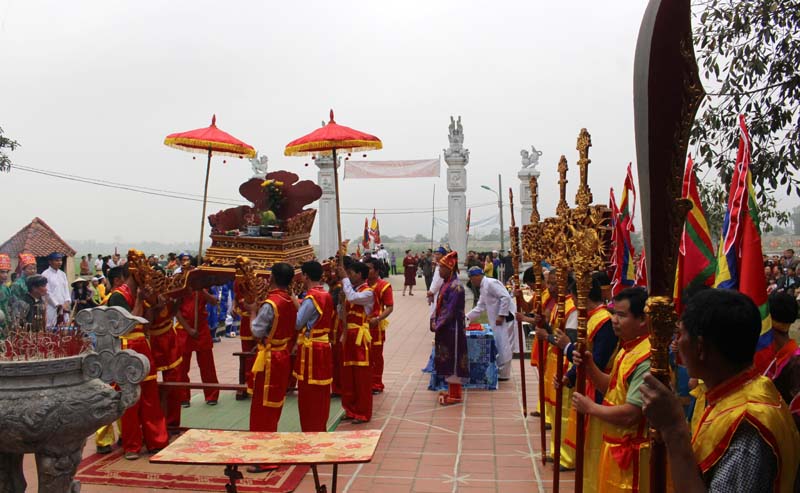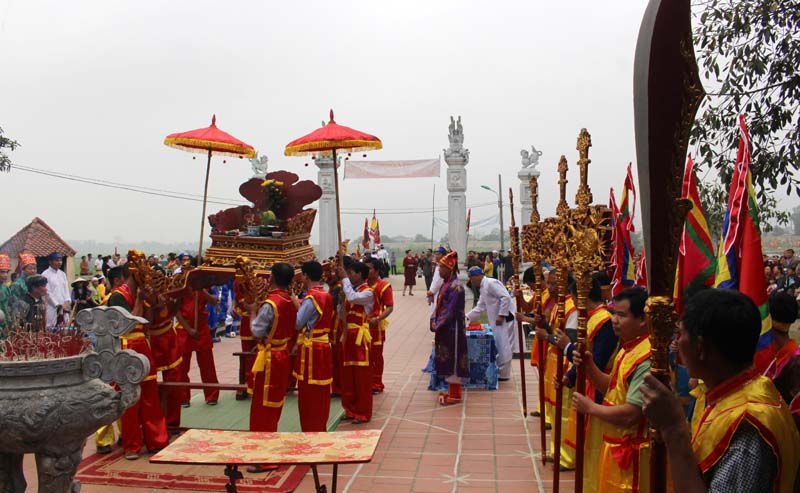


 Many festivals have been restored and held in the provincial
relics attracting a large number of people to participate. The photo: The
Ceremony of Via Lua procession at Ngoi Communal Festival (Hoa Binh City) in
2019.
Many festivals have been restored and held in the provincial
relics attracting a large number of people to participate. The photo: The
Ceremony of Via Lua procession at Ngoi Communal Festival (Hoa Binh City) in
2019.
For many past years, the sector of Culture, Sports and Tourism has always attached the great importance to the management of monuments and organizing festivals at the monuments in the province. Thereby, it has been contributing to the protection and promotion of the value of the monument.
Basically, the system of relics of the province has been protected and renovated to ensure the existence and originality of the relics. However, due to many causes, both subjective and objective conditions, many monuments have been damaged and degraded. Recognizing the importance of this issue, in recent years the province has strengthened and paid attention to the State management of the system of the cultural heritage in the area. A lot of historical and cultural relics have been researched and surveyed to compile a relic grading record at the national and provincial level.
A number of revolutionary and cultural and historical relics have been restored, embellished and protected for the efficient exploitation and use. The sector of culture has been promoted the propaganda and introduced the value of the important monuments to visitors such as: Thac Bo temple relic, Hoa Binh prison revolutionary historical relic...
Coordinating with the sector of Education and Training, they have organized visits with to the revolutionary historical sites for the students and they also sent the officials to present: the Victory Relic of Me Bridge; the location of setting up the office of the Provincial Party Committee; Uncle Ho's place to visit the Socialist Labor Youth School ...
Thereby, it helps students understand the revolutionary historical traditions of the local and the values of the revolutionary historical and cultural heritage, and directly participate in the activities to protect and promote the value of the literal heritage
Mr. Luu Huy Linh, the Deputy Director of the Department of Culture, Sports and Tourism says: To promote the effectiveness of the value of monuments, in the coming time, the Cultural sector will enhance the management and investment of the State and coordinate with other appropriate authorities in protecting and promoting the values of the cultural and historical monuments, and landscapes. At the same time, the inventory, the classification and the inspection of relics and antiques in monuments will be strengthened to facilitate the preservation.
The propaganda, promotion and introduction of the addresses of the historical and cultural relics will be promoted in association with the tourism development on the mass media. The system of the policies on the monuments, especially the policies on socializing the conservation and promoting the value of monuments will soon be completed.